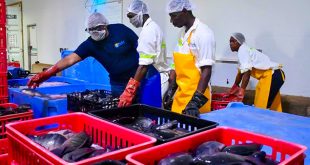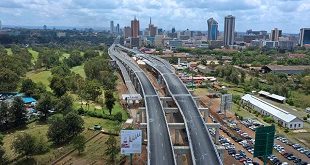The cost of the two hydro-power dams that the government is building at Karuma and Isimba could rise beyond control unless a recent directive by President Yoweri Museveni is implemented cautiously. Ministry of Energy Permanent Secretary (PS) Kabagambe Kaliisa issued the warning in reply to queries raised by Keith Muhakanizi, the PS Ministry of Finance who is also the Secretary to the Treasury.

The Independent has learnt that senior officials of the ministries of at the Energy and Finance ministries and officials of Uganda Electricity Generation Company Ltd (UEGCL) met over the issue on June 20 at the Energy ministry offices at Amber House in Kampala.
Kalisa was expected to amend certain contracts of the project and give UEGCL full powers to administer the same as directed by the president but sources at Amber House intimated that this didn’t happen.
By press time, an official at the ministry said that another meeting scheduled for June.22 could be the solution to the fight between Energy Ministry and UEGCL officials, which has threatened the implementation of the dam projects.
It was also hoped that the officials would use that meeting to discuss a High Court case that also threatens to delay implementation of the two projects. In the case, Henry Kyalimpa, a lawyer and procurement consultant, wants court to order an independent engineering, financial and Valuefor-Money audit to determine the quality of works, progress and viability of both hydropower dams.
He says the projects “are mired in acts of corruption, misuse and wastage of public resources that render the project uneconomic and unviable”.
Kyalimpa is challenging the six entities involved in the construction of the dam projects. These are; theAttorney General, Sinohydro, China Water and Electricity Corporation (CWE), Exim Bank China, Energy Infratech, and the Uganda Electricity Generation Company Ltd (UEGCL).
Karuma at 600MW and Isimba 183MW were initially planned to cost Shs. 7.2 trillion (Approx. US$2.3 billion) to build. But the cost is already estimated to go up by an extra Shs 1.8 trillion (Approx. US$ 536 billion), according to documents seen by The Independent.
The International Renewable Energy Agency (IRENA) places average investment costs for large hydropower plants between US$1 million to US$3.5 million per MW generated. The differences in cost result from the site of dam, its design, and the cost of labour and materials. At the estimated current cost of US$ 3.3 million per MW, the Karuma and Isimba projects are already on the high side.
The World Bank has recently cautioned Uganda about the spiraling costs of its public infrastructure projects. It noted that over the past decade, some projects initially planned to cost US$100 million end up costing US$200 million because of poor-designs.
In the case of Karuma and Isimba, the cost, according to Kaliisa, could go higher if changes President Museveni is proposing are not implemented with caution.
Deals at stake
Museveni wants UEGCL bosses to takeover full implementation rights for the two projects but Ministry of Energy officials, led by Minister Irene Muloni and the PS; Kaliisa, oppose the move. The Ministry of Energy officials are currently in charge of implementation.
The Independent has been told that the projects potentially involve lucrative deals for officials or their cronies for supplying the contractors with construction materials like cement, and stones, among others.
Because government has not been strict on the Chinese companies and set terms on local content, critics say, the Chinese contractors are reportedly handing the lucrative deals to fellow Chinese companies.
In one case, one of the contractors is said to have awarded a Chinese company the deal to supply cement. So, the Chinese company in question buys from a local cement manufacturer and then resells at a higher price to the contractor. In another case, it is a Chinese company supplying hard core stones used in the construction. Given the circumstances, therefore, insiders say it is those with leverage like government officials overseeing the project and their business allies, who are able to get a piece of the business.
So when Museveni issued his directive on changes on April 5, on May 4, Kaliisa wrote to Muhakanizi saying his team is “anxious to implement” the Presidential directive. He wrote that he had already advised the accounting officer of the Ministry of Energy to prepare anAdvisory Brief for the Finance Ministry to know the resources to be transferred to UEGCL.
Kaliisa, however, cautioned that a takeover of full contract administration of the projects as directed by President Museveni, “has to be carried out carefully as it has serious legal, technical, and administrative consequences which require this ministry to seek a legal opinion of the Solicitor General on how to proceed”.
Muhakanizi had on April 27 written to Kaliisa asking him to transfer to UEGCL all the resources set aside for the supervision of the projects. “
By copy of this letter,” Muhakanizi wrote, “theAccountant General is requested to make arrangements for the direct transfer of resources to UEGCL and UETCL starting FY 2016/17.” In reply, Kaliisa told Muhakanizi to note that full contract administration could involve the amendment or termination of the existing projects in agreements with contractors, consultants, and financiers of the two projects.
 The Independent Uganda: You get the Truth we Pay the Price
The Independent Uganda: You get the Truth we Pay the Price





